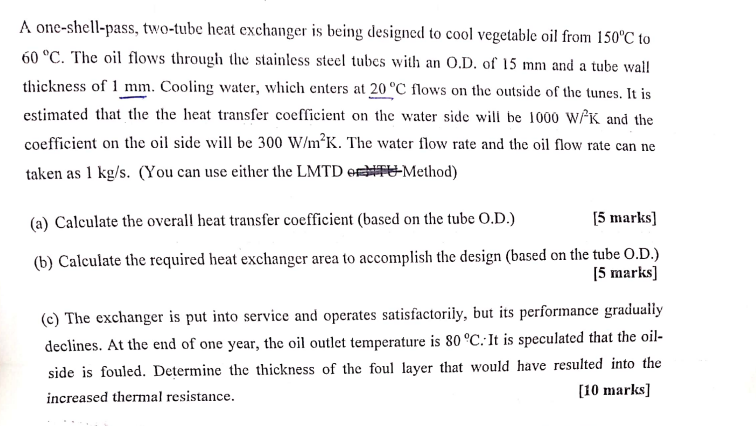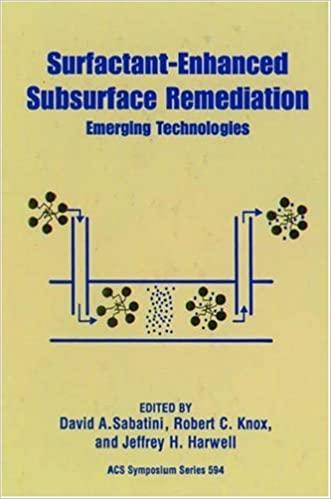

A one-shell-pass, two-tube heat exchanger is being designed to cool vegetable oil from 150C to 60 C. The oil flows through the stainless steel tubes with an O.D. of 15 mm and a tube wall thickness of 1 mm. Cooling water, which enters at 20C flows on the outside of the tunes. It is estimated that the the heat transfer coefficient on the water side will be 1000 W/K and the coefficient on the oil side will be 300 W/mK. The water flow rate and the oil flow rate can ne taken as 1 kg/s. (You can use either the LMTD E-Method) (a) Calculate the overall heat transfer coefficient (based on the tube O.D.) [5 marks) (b) Calculate the required heat exchanger area to accomplish the design (based on the tube O.D.) (5 marks] (c) The exchanger is put into service and operates satisfactorily, but its performance gradually declines. At the end of one year, the oil outlet temperature is 80 C. It is speculated that the oil- side is fouled. Determine the thickness of the foul layer that would have resulted into the increased thermal resistance. [10 marks] Material k ( W/m.K) 0.670 P (kg/m3) 975 Cp (J/kg.K) 4190 Water Foul Stainless steel 0.139 15 8000 480 A one-shell-pass, two-tube heat exchanger is being designed to cool vegetable oil from 150C to 60 C. The oil flows through the stainless steel tubes with an O.D. of 15 mm and a tube wall thickness of 1 mm. Cooling water, which enters at 20C flows on the outside of the tunes. It is estimated that the the heat transfer coefficient on the water side will be 1000 W/K and the coefficient on the oil side will be 300 W/mK. The water flow rate and the oil flow rate can ne taken as 1 kg/s. (You can use either the LMTD E-Method) (a) Calculate the overall heat transfer coefficient (based on the tube O.D.) [5 marks) (b) Calculate the required heat exchanger area to accomplish the design (based on the tube O.D.) (5 marks] (c) The exchanger is put into service and operates satisfactorily, but its performance gradually declines. At the end of one year, the oil outlet temperature is 80 C. It is speculated that the oil- side is fouled. Determine the thickness of the foul layer that would have resulted into the increased thermal resistance. [10 marks] Material k ( W/m.K) 0.670 P (kg/m3) 975 Cp (J/kg.K) 4190 Water Foul Stainless steel 0.139 15 8000 480








